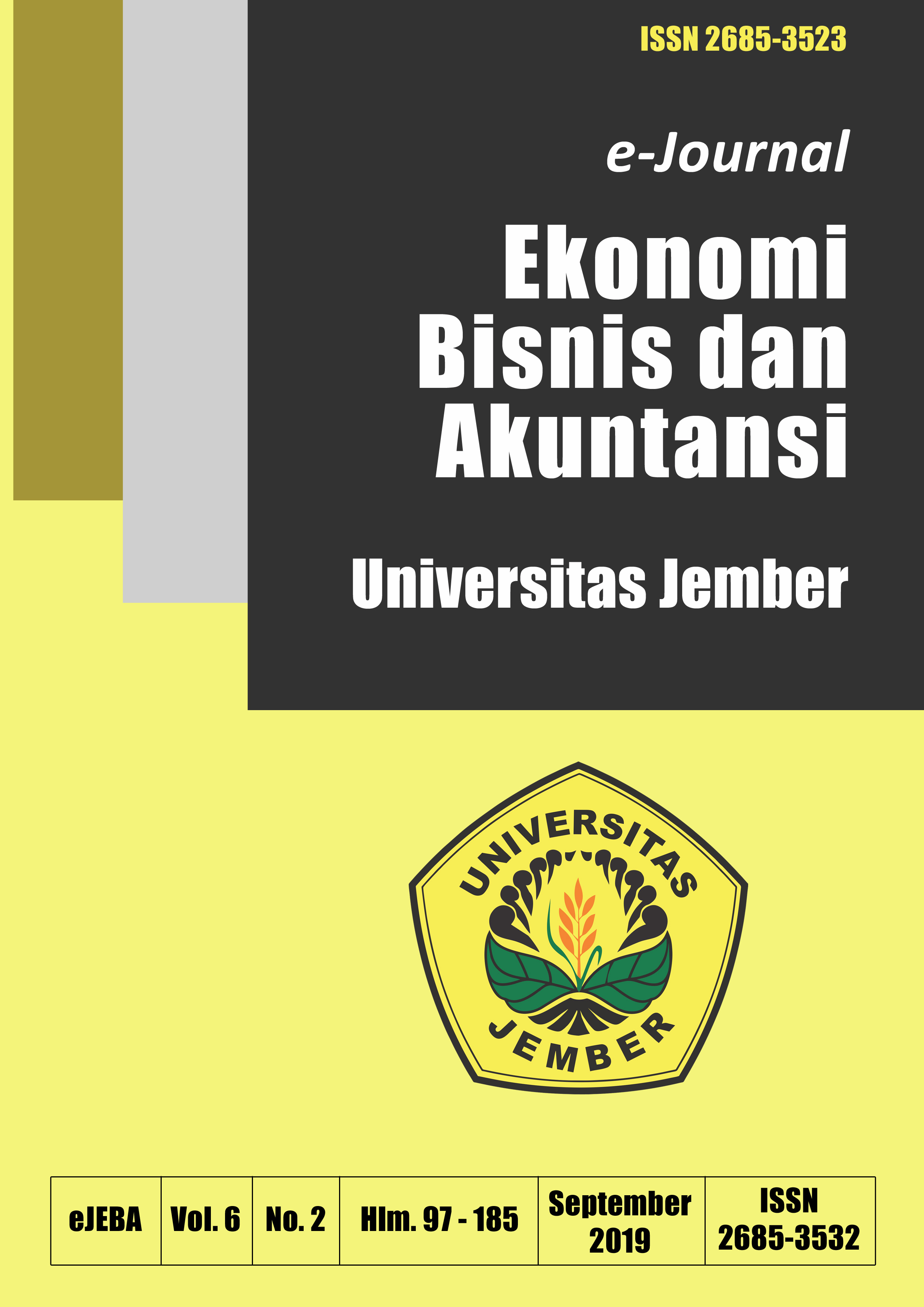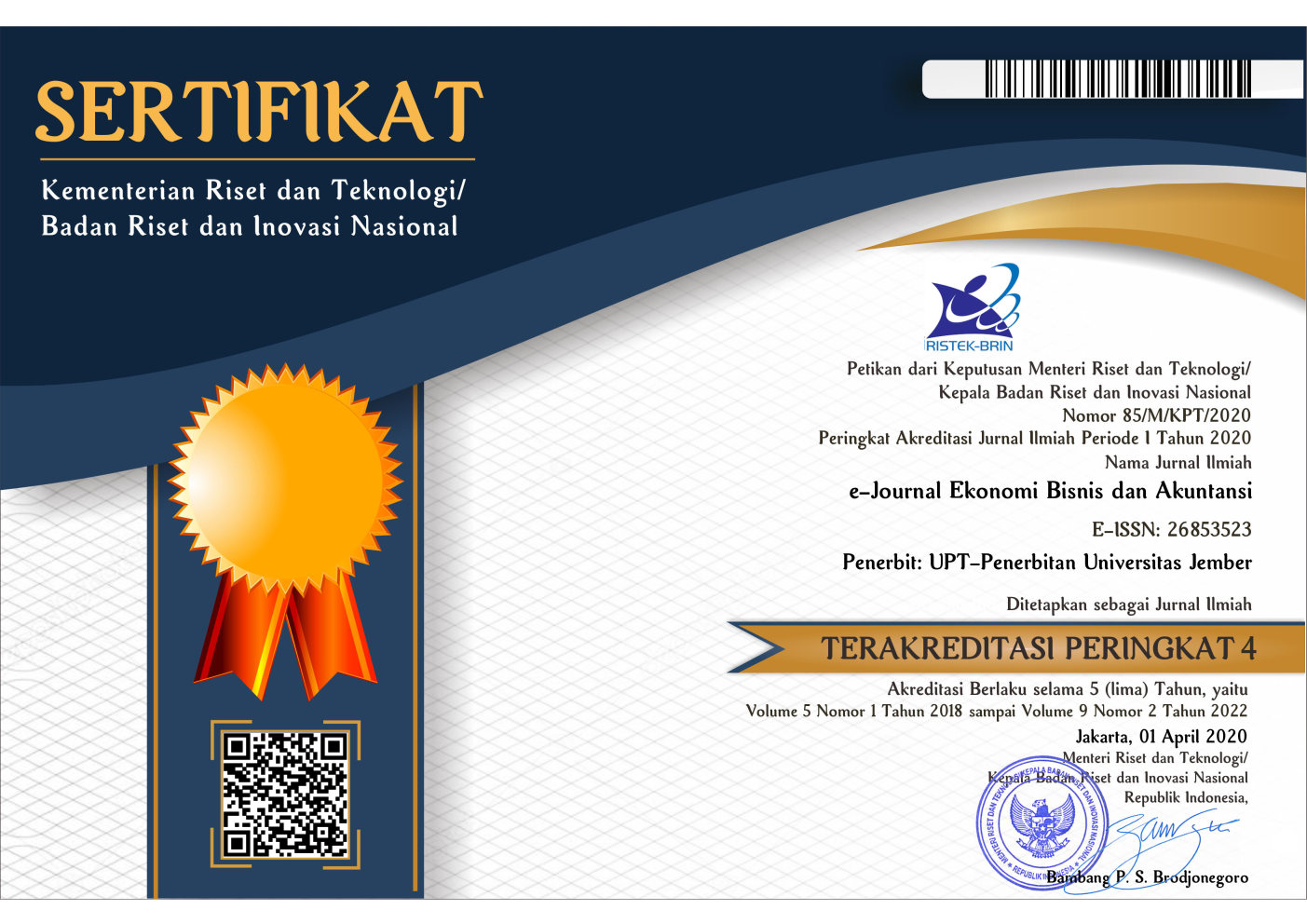Analisis Penerimaan Penggunaan E-Learning dengan Pendekatan Theory of Planned Behavior (TPB) pada Mahasiswa Akuntansi Universitas Jember
Abstract
This study aims to analyze the acceptance and use of e-learning by using Theory of Planned Behavior approach (TPB) in accounting students of University of Jember who have done programming of academic year 2016/2017 even semester. This research is classified as explanatory research with quantitative approach. The data obtained in the form of primary data obtained directly on the object of research through the submission of questionnaires through personal chat either through social media and e-mail. Then, the respondent access and fill the questionnaire online through the questionnaire link that has been given. Data analysis method used in this research is Structural Equation Modeling (SEM) by using SmartPLS version 3.2.3 test instrument. The result of analysis shows that by using TPB method can be known significant relationship between behavioral intention toward acceptance behavior and the use of e-learning as well as not significant relationship between perceptive behavior control toward acceptance behavior and the use of e-learning by accounting student of Jember University.
Keywords: Attitude toward Behavior, Subjective Norm, Perceived Behavior Control, Behavioral Intention, and Behavior The Acceptance and The Use of E-Learning

















